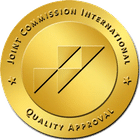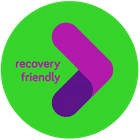Table of Contents
What makes Vicodin so addictive?
In the United States, the opioid crisis is a battle that many individuals and families know all too well; according to the CDC, in 2022, almost 108,000 people died from drug overdoses, with opioids involved in about 82,000 cases, making up 76% of the total. What often starts as a simple prescription to relieve pain can sometimes spiral into a dangerous dependency on opioids, such as Vicodin dependence. For many, it’s difficult even to recognize the signs of this dependence until it’s already taken hold.
Even when taken as prescribed, Vicodin can be addictive. Some individuals may feel the urge to continue using it beyond medical advice, engage in recreational use, or even fabricate symptoms to obtain a prescription. This pattern of misuse can quickly lead to Vicodin dependence. But what makes Vicodin so addictive?
In this blog by GateHouse Treatment, we discover the underlying reasons for Vicodin dependence. We’ll delve into its composition, the symptoms of addiction, and the side effects associated with its use.
What Is Vicodin?
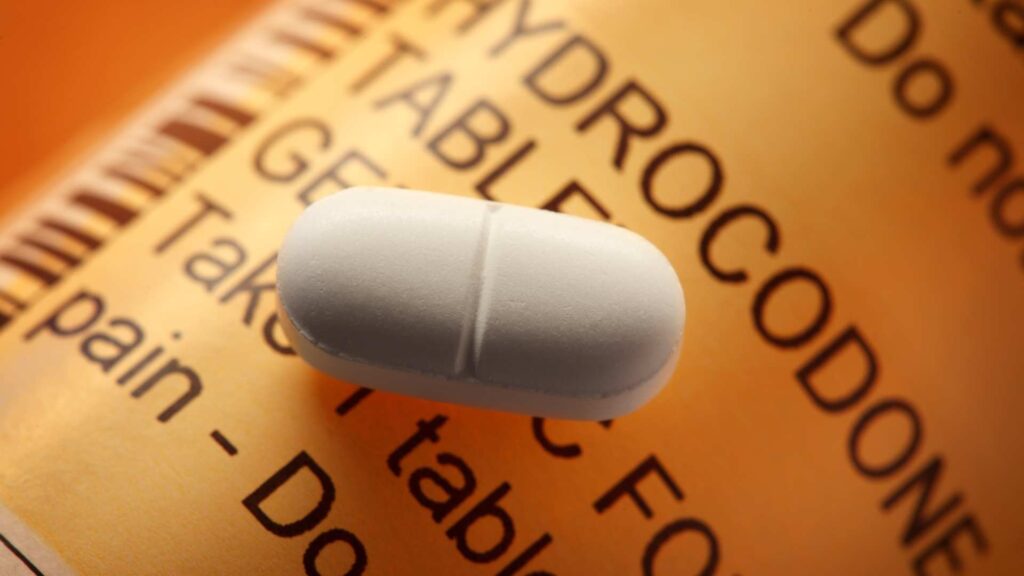
Vicodin is a combination medication that contains two active ingredients: hydrocodone and acetaminophen. Hydrocodone is a powerful opioid pain reliever, while acetaminophen is commonly known as Tylenol, a mild pain reliever that helps enhance the effects of hydrocodone. As an opioid, hydrocodone binds to specific receptors in the brain and nervous system, reducing the sensation of pain and often creating feelings of euphoria, which can contribute to its potential for misuse.
While doctors often prescribe Vicodin for short-term pain relief after surgery or injury, it can be easy for patients to become dependent on it, especially when used long-term.
Why Is Vicodin Addictive?
Vicodin’s addictive potential lies in how its primary component, hydrocodone, affects the brain’s reward system. As explained by Science & Practice Perspectives, when opiates enter the brain, they bind to mu-opioid receptors on neurons, triggering a release of dopamine, the neurotransmitter responsible for feelings of pleasure and reward. This dopamine surge creates euphoria, which can drive people to take higher or more frequent doses than prescribed to keep experiencing these feelings.
Over time, the brain adapts by building a tolerance, meaning larger doses are needed to achieve the same effect. This adaptation often leads to a cycle of increasing use, which can quickly progress to dependence, where the person feels withdrawal symptoms without the drug and, eventually, addiction.
How is Vicodin Regulated?
In 2014, the DEA changed its categorization of Vicodin from Schedule III to the more restrictive Schedule II controlled substance. This adjustment indicates that while doctors use Vicodin for accepted medical purposes, they restrict its use to specific situations where other pain management options may not be as effective.
Physicians typically prescribe Vicodin for short-term pain relief, such as after surgery or for injuries. However, for individuals with chronic pain, doctors may prescribe it with caution and monitor the patient closely to prevent misuse.
Signs of Vicodin Dependence
Recognizing that average opioid consumption can turn into dependence is not easy, especially when healthcare professionals recommend these substances to relieve pain. That’s why you should be aware of the signs that may include:
- Taking more than the prescribed dose: Individuals may begin to take more Vicodin than prescribed in order to relieve pain or experience euphoria.
- Frequent cravings: A strong urge or need to take Vicodin, even when it’s not medically necessary.
- Difficulty cutting back: Individuals may struggle to stop taking the prescription, even when they want to or understand the risks.
- Tolerance and withdrawal: Over time, the body becomes tolerant to the substance, requiring higher doses to achieve the same effects. When someone tries to stop or reduce their intake, they may experience withdrawal symptoms like irritability, nausea, sweating, and muscle pain.
- Neglecting responsibilities: As dependence grows, individuals may neglect their work, school, or personal responsibilities in favor of using opioids.
Common Side Effects of Vicodin
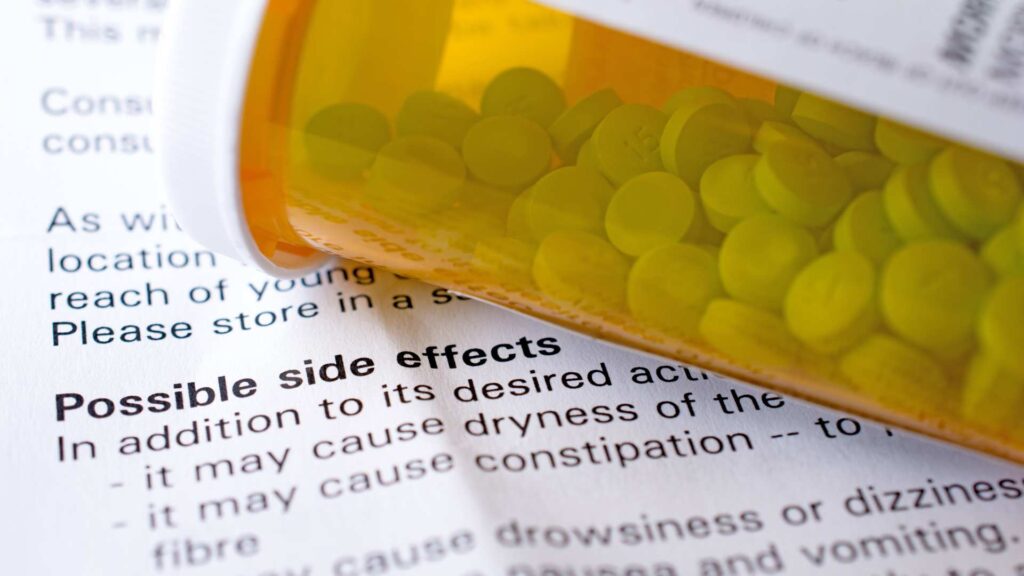
As explained, Vicodin contains hydrocodone, which can become highly addictive when overused, and acetaminophen, which can harm the liver if taken in excessive amounts. According to the Mayo Clinic, it is not safe to use more than 4,000 mg of acetaminophen. To mitigate this risk, manufacturers have reduced the acetaminophen content per tablet from 700 mg to 325 mg.
Moreover, Vicodin misuse can lead to various side effects, including:
- Heart disease
- Compromised immune system
- Seizures
- Heart attack or stroke
- Abdominal cramps
- Depression
- Digestive issues
- Dizziness and lightheadedness
- Feelings of relaxation
- Lowered heart rate
- Muscle pain
- Nausea and vomiting
- Nervousness
- Sleepiness
- Slowed breathing
Is Treatment Available for Vicodin Dependence?
Medication-assisted treatment (MAT) is one of the most effective methods for treating opioid addiction, including Vicodin. MAT combines FDA-approved medications like methadone, buprenorphine, and naltrexone to help individuals manage cravings, reduce withdrawal symptoms, and support long-term recovery.
How MAT Helps with Vicodin Dependence:
- Alleviating Withdrawal and Cravings: MAT medications like methadone and buprenorphine help manage withdrawal symptoms and cravings without the intense euphoria that leads to misuse. Naltrexone blocks opioid effects entirely, reducing the incentive to misuse opioids.
- Long-Term Stability: MAT helps stabilize brain chemistry and reduces relapse risk, making it a crucial part of long-term recovery.
Get Help with GateHouse Treatment
If you or someone you love is struggling with Vicodin dependence or any other opioid or alcohol addiction, seeking help is the first step toward recovery. At GateHouse Treatment, we offer comprehensive medication-assisted treatment options tailored to individual needs. We provide compassionate care and support throughout the recovery process.
Call us at (855) 448-3588 or fill out the form so we can call you back and discuss how we can assess your needs and check your insurance benefits.
By taking advantage of MAT programs and complementing them with counseling, individuals can regain control over their lives and move forward on the path to a healthier, substance-free future.
- How a Partial Hospitalization Program Supports Addiction Recovery - March 19, 2025
- Exercise for Addiction Recovery: A Power Way for Healing and Balance - March 7, 2025
- Alcohol Poisoning: How to Recognize and Prevent It - February 26, 2025


